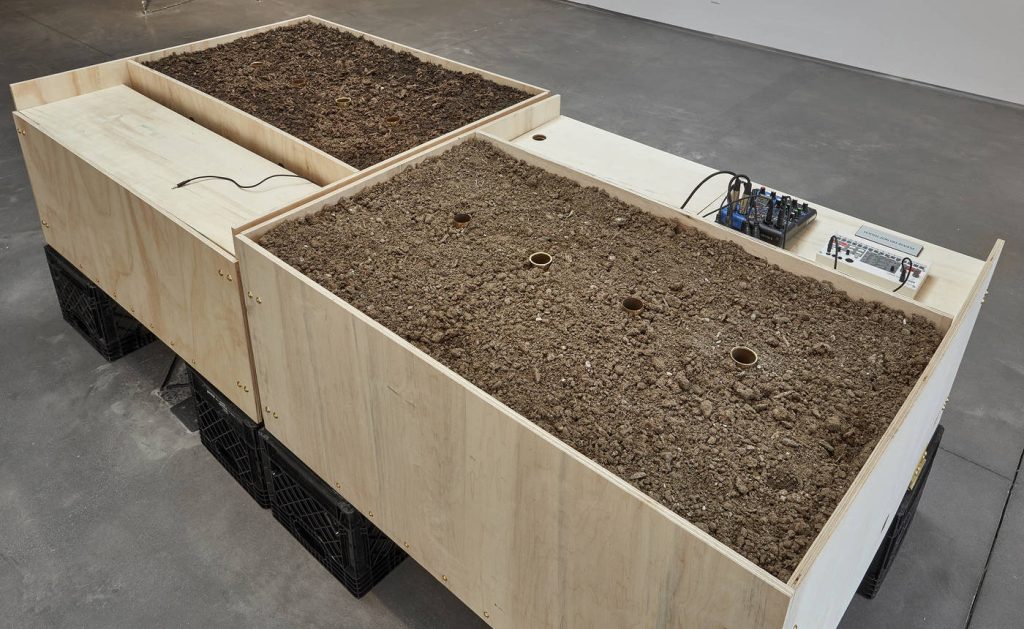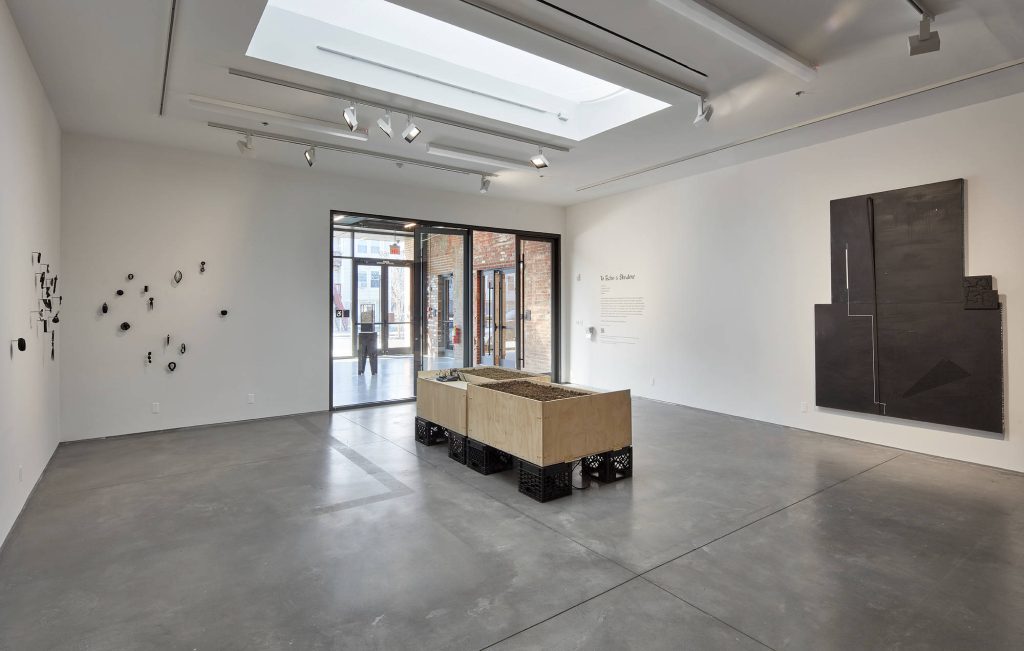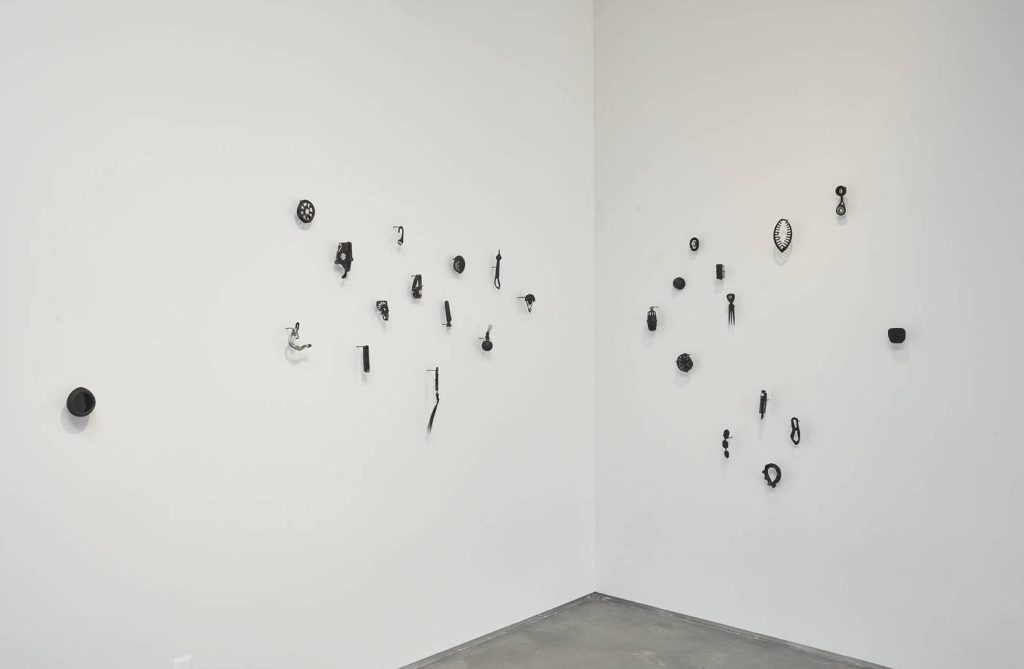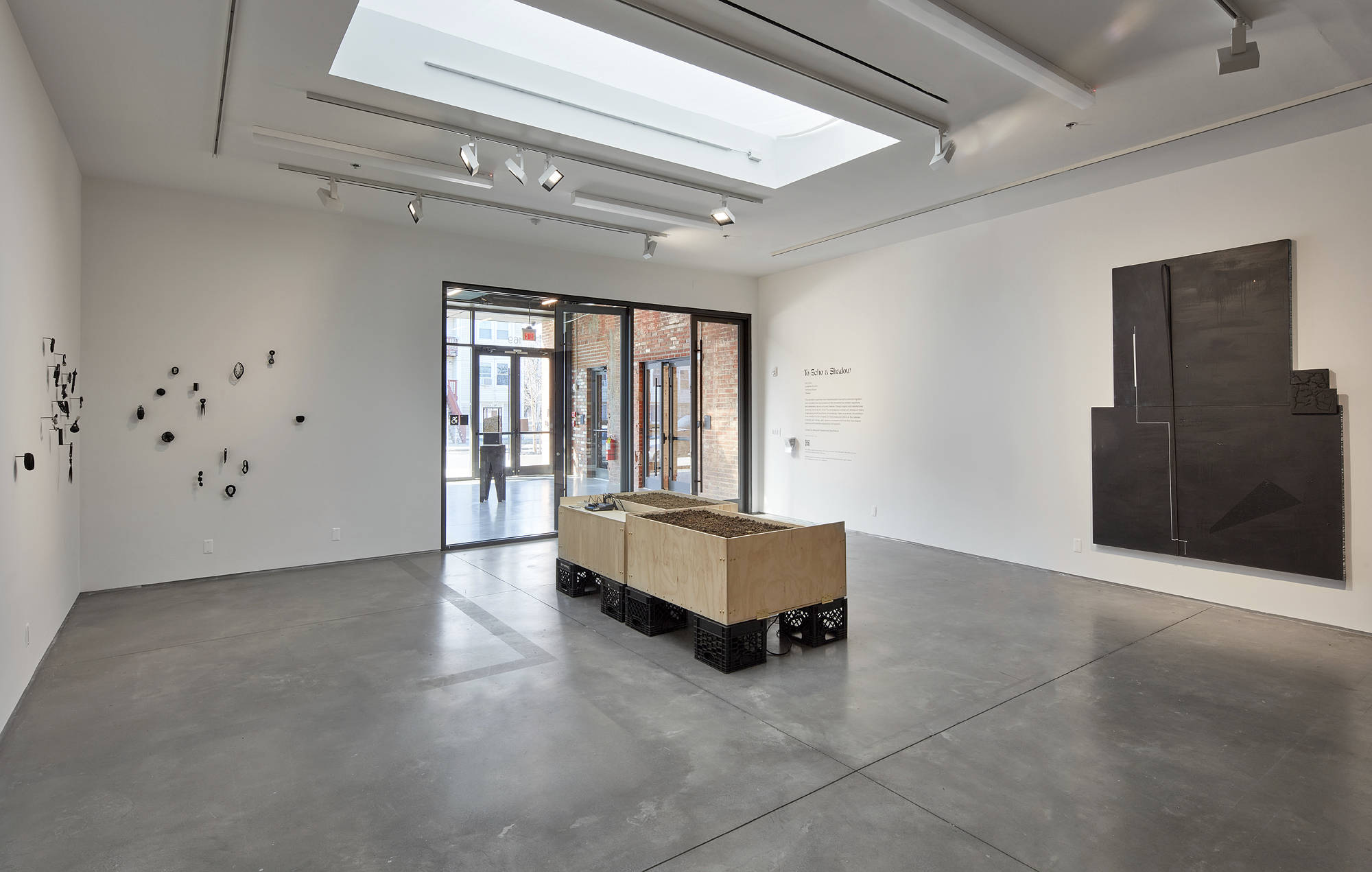To Echo A Shadow
March 9th, 2024 to May 19th, 2024
NXTHVN
169 Henry St.
New Haven, CT 06511
NXTHVN, an international art institution in the Dixwell neighborhood of New Haven, CT, is pleased to present To Echo A Shadow, a group exhibition on view from March 9 to May 19, 2024. The exhibition is curated by Marquita Flowers and Clare Patrick, NXTHVN’s Cohort 05 Curatorial Fellows.

Benisya Ndawoni (Return to the Unfamiliar)
Photo by Chris Gardner.
To Echo a Shadow is a group exhibition featuring site-specific installations by Ash Arder and Lungiswa Gqunta and select artworks by Torwkase Dyson and Oluseye. The exhibition brings these artists together to examine how industrialization has led to forced migration, which in turn has evolved into a practice of developing multi-local forms of knowledge.
The multi-local, meaning to work on a local level across more than one region, is highlighted through each artists’ practice and works on view. Heavily influenced by their present and ancestral geographic locations, the artists have journeyed along various routes including: the suburban and urban centers of South Africa; Southern US to Detroit and Chicago; and the UK to West Africa, as well as the Americas. The artworks use materials of sound, soil, smoke, light, memory, movement and the associated and embedded experiences of ecology, geography, opacity and Blackness. The exhibition contends that the reverberations of enforced migration are unfixed, responsive and ephemeral, like an echo and a shadow.

Broadcast #4, 2024.
Wood, plastic crates, copper coupling, soil, nettle seeds, cardboard, burlap, analog drum machine, bass envelope filter, speakers, cassette player, cassette tape, sound composition.
Sound is used as a catalyst to broadcast (scatter) seeds onto beds of soil.
Dimensions variable
Photo by Chris Gardner.
“Instead of exploring the effects of industrialization through an economic analysis, we invite viewers to navigate these conditions through sensorial experiences through the works presented,” said Flowers and Patrick. “We’re excited to kick off NXTHVN’s exhibition calendar this year with To Echo A Shadow and are grateful to have the opportunity to include works from such dynamic artists across Africa and its diaspora.”
Ash Arder’s Broadcast #4 is a set of plywood rectangular structures that are filled with soil, seeds and sound. The work plays with the dual meaning of broadcasting as an agricultural and cultural practice. Broadcasting, in agriculture, is a method of randomly scattering seeds across a large area but is also a transmission of sound. Speakers embedded beneath the soil are connected to brass pipes that hold seeds of collard greens.
The sound emits a visceral hum which then vibrates the seeds across beds of soil, ready for germination. Arder draws on movement and sustenance in the sounds of Johnny “Hammond” Smith’s “Black Coffee,” an album recorded live in Dixwell’s Monterey Club. By engaging with history and materials as a composer, Arder turns broadcasting into a semantic, physical and technical proposition.

Photo by Chris Gardner
Two perpendicular rectangles that loom over the body form Torwkase Dyson’s painting Indeterminacy #3 (Black Compositional Thought). Contrasting textures reveal and obscure geometric shapes as a latitudinal wooden cord spans across both panels. The work uses abstraction as a strategy to reconsider history, enforced migration, bodily distortion and contortion under systems of subjugation.
Glimmers of forms oscillate between recognition and disappearance within the drenched black surface of the painting’s canvas. The painting prompts the viewer to begin thinking from new bodily orientations and specifically reference the liberation strategies of Harriet Jacobs, Henry (Box) Brown and Anthony Burns, who each used shapes beyond the immediately recognizable to orient themselves out of the institution of slavery, from the South to the North of the United States.
Lungiswa Gqunta’s line drawing Benisiya Ndawoni (Return to the Unfamiliar) is composed of razor wire that is wrapped in sage, imphepho and fabric, tied with red string. Extending as a continuous line that traverses across the walls, ceiling and floor of the gallery, Benisiya Ndawoni (which roughly translates from isiXhosa to ‘where were you going’) is a haptic and bodily invitation to confront the violence of imposed borders and systemic barriers to access.
With my softness I carve mountains is an installation of curvilinear and cone steel sculptures that rust as they hold water. The sculptures are intuitively placed in front of a darkened brown wall with chalk tracings and a video projection of the artist on the floor repeatedly rolling towards the viewer. Soft words in isiXhosa, the artist’s mother tongue, are spoken out as the artist recounts a dream offering communication with different realms. Scent, smell and erosion are critical in both of Lungiswa Gqunta’s installations. Questions of access, beauty and violence invoke and illuminate histories of Black people across South Africa during the Apartheid era.
The constellation of Oluseye’s Eminado series spans across two walls of the gallery. Black reclaimed rubber and found objects are reunited to create talismans. The objects are surprising and stark, juxtaposing razors with children’s toys, sometimes pairing hair combs with telephone wire and cowrie shells. “Diasporic debris” is the descriptive phrase coined by Oluseye for the scavenged and collected materials found on coastlines, at taxi ranks, in markets and on dance floors. The Eminados chart the artist’s travels across Brazil, Mozambique, South Africa, Nigeria and Canada.

Eminado Series, Reunion 18, 2018 -Ongoing.
Found objects, rubber, synthetic hair, cowrie shells.
Photo by Chris Gardner.
Continuing the practice of engaging the afterlife of objects, Oluseye’s Good Luck Totem is a playful moment of reclamation. The sculpture is a nonfunctional vending machine filled with cowrie shells, placed on a wooden base. Viewers entering the gallery are presented with a collection that reveals the cyclical nature of how objects become currency, symbols and back again. The shells are inaccessible which points to the tension and contradictions of cultural preservation.
“At NXTHVN, we’re grateful to have the opportunity to provide Fellows with educational and mentorship resources to help bring a successful show to fruition,” said Kalia Brooks, Interim Executive Director at NXTHVN. “With each new Cohort, it’s wonderful to see how our Curatorial Fellows bring together exhibitions exploring themes that align closely with our mission.”
Accompanying the exhibition is a dedicated space for listening, sharing and local jazz history. Dixwell Avenue was a lively, crucial and noteworthy stop along the Jazz Corridor between New York and Boston during the 20th century. Record players, headphones and a selection of iconic records from jazz musicians who have performed in Dixwell offer a moment for communal listening.
The curators invite audiences to reflect on their individual and generational experiences of industrialization, migration and the ways that sound is the connector of multi-local knowledge.
In its fifth year, the NXTHVN Fellowship accelerates artistic and curatorial careers within a collaborative, community-driven context through a cutting-edge curriculum that marries artistic and professional development.
To Echo A Shadow opens on March 9th, 2024 to May 19th, 2024 at NXTHVN
©2024 NXTHVN





